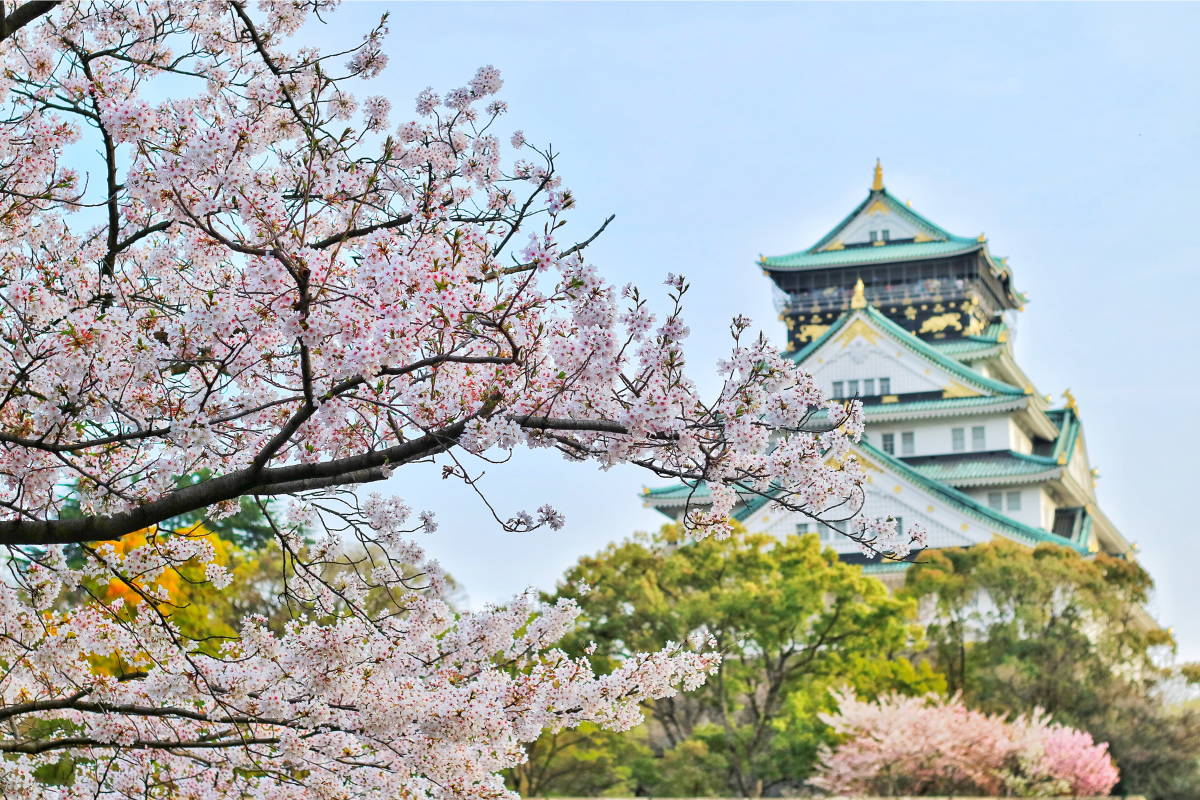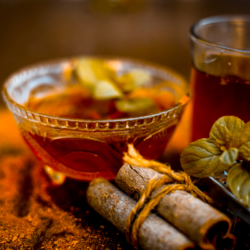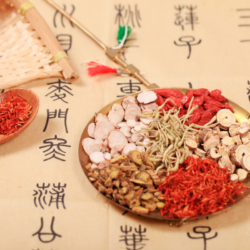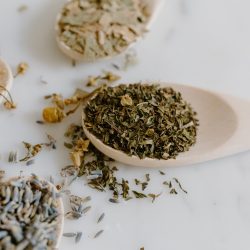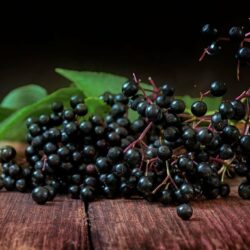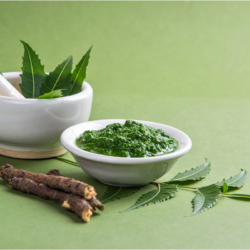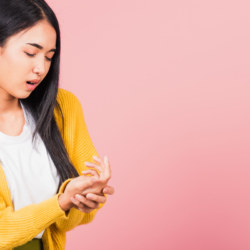In 2002, Honso USA introduced its Kampo herbal formulations to healthcare professionals in the United States. These products have a long history of being prescribed by Japanese doctors over several decades. Researchers undertook clinical studies to evaluate the efficacy of Kampo herbal formulations. A study was conducted on Honso Sho-saiko-to (H09) to treat hepatitis C at the Memorial Sloan-Kettering Cancer Center in New York and cirrhosis caused by hepatitis C at the UCSD Liver Center. This research is jointly supported by Honso’s American and Japanese subsidiaries.
Kampo medicine from Japan
Kampo medicine, known in Japan as 漢方医学 (Kanpō igaku), is a traditional Japanese medical and pharmaceutical discipline. It is strongly influenced by traditional Chinese medicine (TCM). The term Kampo-yaku refers to the study of traditional Japanese phytotherapeutic uses. This medicine favours the use of plants, mushrooms, animals and minerals, often combined in complex formulas. It also incorporates techniques such as acupuncture and moxibustion.
The word Kampo derives from ‘Kan’, a reference to the Han dynasty in China, and ‘Ho’, meaning ‘method of treatment’. So, Kampo can be translated as “treatment method according to the Han”. Although related to TCM, Kampo medicine differs in terms of diagnostic methods and pharmacopoeia.
What is Kampo medicine?
Kampo medicine, also known as Kampo igaku in Japanese, is a traditional medical and pharmaceutical discipline. It is inspired by traditional Chinese medicine (TCM). The term Kampo-yaku refers to the study of traditional Japanese phytotherapeutic uses.
This medical practice emphasises the use of medicinal plants and includes specific diagnostic techniques. Therapies involve the use of parts of plants, fungi, animals and minerals, often combined to create ‘formulas’. These formulas can take various forms such as decoctions, powders, pastes, liqueurs and infusions. Techniques such as acupuncture and moxibustion are used to complement the treatment.
The term ‘ Kampo’ originates from the combination of the words ‘ Kan’ and ‘Ho’. “Kan” refers to the Han dynasty in China. “Ho” means “the way of care” or “the method of care”. Thus, “Kampo” can be translated as “method of care according to the Han”. This translation highlights its close link with traditional Chinese medicine.
The history of Kampo is intimately linked to that of traditional Chinese medicine, dating back more than 3,000 years. Both share historical works such as the Koteidaikei, the Shinnohonzokyo and the Shokanron, which remain important references. Over the centuries, practitioners have developed new herbal formulas, influenced by the Japanese and Chinese schools of healing.
Leading figures such as Todo Yoshimasu played an essential role in the development of Kampo medicine. However, the Meiji era brought challenges with Westernisation, jeopardising this medical practice.
Today, Kampo medicine is fully integrated into the Japanese healthcare system. It uses around 150 standardised, mainly plant-based, formulas. Kampo health products can be classified as medicines or food supplements. This medical practice is based on a rich heritage of traditional practices, while adapting to the needs of modern health.
Principles of Kampo
TMJ aims to prevent illness by stimulating the body’s natural healing powers. It restores balance when necessary. Kampo can also be used to complement conventional medical treatments. This medicine is based on a holistic approach. TMJ is based on the circulation of energy in the body. It is inspired by the Taoist vision of the world, which aims to maintain and strengthen health by reinforcing the body’s capacity for self-healing.
TMJ encompasses four categories of techniques, which can be used together or separately:
- Manual techniques: such as Anma massage, Shiatsu and Sotai.
- Acupuncture techniques: These involve the stimulation of specific points. They use acupuncture in conjunction with moxibustion, as well as paediatric acupuncture.
- Moxibustion techniques: This includes burning cotton mugwort either directly (a method specific to Japan) or indirectly. It has a therapeutic purpose.
- Japanese pharmacopoeia: Known as Kampo in Japanese, this is Japanese herbal medicine.
Several fundamental theoretical principles guide JTM, including :
- Ki: which considers the body and mind to be inseparable, where Ki energy governs the phenomena of the universe in an infinite manner.
- In and Yo (Yin and Yang): These represent the two phases of a cyclical movement that governs the universe, where each element is both itself and its opposite, and it is the alternation between In and Yo that is the driving force.
- The Five Elements: Metal, wood, water, fire and earth, which are fundamental characteristics of nature. They are also used to describe various aspects of man and his existence, according to Confucian theories.
- Unity: which emphasises the importance of the connection between body and mind, as well as the harmony between man and the outside world to which he belongs.
The place of Kampo medicine in Japan
Kampo medicine in Japan has undergone a significant evolution recently. Since the beginning of the 20th century, there has been a revival of interest in this traditional medicine, which has led to a review of educational programmes in medical schools. Since 2005, the majority of Japanese medical universities have included courses in Kampo medicine in their curricula. Today, Kampo is considered an essential component of Japanese medicine, and doctors are authorised to practise it in the same way as Western medicine.
Over 82% of doctors in Japan are familiar with the principles of Kampo medicine, and 78% incorporate it into their medical practice. A recent study revealed that almost 83.5% of Japanese doctors surveyed regularly use Kampo in their practice.
As far as Kampo therapies in Japanese herbal medicine are concerned, in addition to formulas available on prescription, the Japanese also use products of European origin. The Japanese market for Kampo therapies includes not only prescription products, but also numerous over-the-counter options.
Reasons for prescribing Kampo health products include the perception that they are more effective than Western medicine (56% of doctors) and spontaneous demand from patients (44% of doctors).
In economic terms, Kampo herbal health products are seen as cost-effective therapeutic solutions due to their relatively low development and production costs compared to modern medicines. For example, treating rhinopharyngitis with Kampo formulas costs three times less than an equivalent Western treatment.
However, despite these economic advantages, Japan is facing budgetary constraints, with a gradual withdrawal of reimbursement for Kampo formulas that have not undergone prior clinical trials. To counter this trend, the Japan Society for Oriental Medicine has set up an Evidence-Based Medicine Committee to promote comparative studies between Kampo and Western therapies.
Differences between TCM and Kampo
There are major differences between Kampo and Traditional Chinese Medicine (TCM ) in terms of fundamental theories, diagnosis and therapeutic solutions. Although the principles of Kampo medicine were originally based on those of TCM, they have been adapted to Japanese culture, making Kampo medicine a simpler form, using fewer ingredients and simpler diagnostic methods than TCM.
In Chinese medicine, the determination of therapeutic solutions is based on a traditional differential diagnosis, whereas Kampo medicine uses the diagnostic concept known as ‘Sho’. The Sho groups together the patient’s symptoms and physical constitution, and the choice of therapeutic formulas will depend on the Sho. Although Japanese Sho shares a common etymology with Chinese Zheng, they have evolved over time to have different meanings.
In TCM, the three fundamental notions are pathology, symptoms and syndrome, and Zheng (syndrome) is a key term in this theory. It generally encompasses the aetiology, pathology and location of the disease. Chinese practitioners define a responsible pathology and a Zheng after analysing the patient’s history and symptoms. As a result, the same illness may be associated with several Zheng. Different conditions may share the same Zheng. This means that different conditions can sometimes be treated with the same TCM formulation.
In Kampo medicine, the Sho is directly derived from the Chinese Zheng, but is simpler. The Sho translates the patient’s symptoms and relates them to various aspects such as the theory of Ki (well-being, energy), the circulation of fluids, eight categories (yin, yang, superficial, deep, cold, hot, deficiency, excess), the “five organs”, and defined stages describing the pathological evolution. Sho is often expressed in terms of formulas, for example, “Kakkonto Sho”, which refers to the treatment of the symptoms of patients treated with the Kakkonto formula.
Clinical studies and Kampo
The very first journal devoted to Kampo medicine and medicinal plants was published as “Kampo Medicine and Chinese Herbs” in 1934. After the Second World War, the Japan Society for Oriental Medicine was formed, and in 1954 it published its own quarterly journal entitled “Kampo Medicine”. Another influential society, the Association of East-Asian Medicine, launched its monthly Journal of Kampo Medicine in 1983. Mention should also be made of the quarterly Journal of Traditional Medicine, published by the Medical and Pharmaceutical Society for Wakan-yaku.
These three journals contain a wealth of articles, news items, case studies and reports on conferences and symposia relating to Kampo medicine. Although parts of these publications are written in Japanese, they all contain abstracts in English. These journals constitute a crucial database of clinical studies and pharmacological trials relating to Kampo treatments.
There is considerable interest in clinical and pharmacological studies to evaluate the treatments used in Kampo medicine, demonstrating the willingness of Japanese doctors to combine Kampo practices with contemporary medicine. These studies use a variety of methodologies, and in 2004 Dr. Katsutoshi Terawasa, President of the Japan Society for Oriental Medicine at the time and Director of the WHO Collaborating Center for Traditional Medicine, proposed several ways in which the methodology of studies on Kampo formulas could be improved.
These recommendations suggest incorporating the principles of Western EBM into the evaluation of Kampo formulas and treating these formulas as contemporary medicines. In addition, it is essential to take into account patient experience. In addition, the methodology should avoid too rigid a comparison between Kampo formulations and synthetic medicines.
The Japanese Pharmacopoeia
The Japanese Pharmacopoeia compiles information on the most common Kampo formula extracts. It provides essential elements such as names in Japanese (in kanji and hiragana), an international designation in Latin, a standardised Kampo preparation number and a detailed composition of plant drugs. This valuable resource helps to clarify the taxonomy of species, as the same plant drug may be derived from different plant species, as in the case of ‘ Ephedra herb ‘, which is derived from various subspecies such as Ephedra sinica, E. intermedia or E. equisetina.
The Japanese pharmacopoeia also provides detailed botanical descriptions and specific names in English, in addition to the quantities required of each plant drug according to various medical references. It provides information on preparation methods, purity controls for raw materials and storage conditions.
Kampo health products
Kampo health products in Japan come in a variety of classes. They include plant-,animal- and mushroom-based medicines, as well as minerals and cosmetics inspired by Kampo medicine. Most of these products are commonly used in the Japanese diet. They are available over the counter in herbal shops, pharmacies, drugstores, supermarkets and online.
In Japan, medicinal plants are grouped into two categories. One category includes medicinal drugs used exclusively as health products. The other includes plants with potential therapeutic virtues but without scientifically established evidence. There is also a specific label in Japan called Food for Specified Health Uses (FOSHU ) for food products with medicinal properties. To obtain this label, scientific proof of efficacy, non-toxicity and safety is required.
The market for over-the-counter products, including those used in Kampo medicine, has grown in recent decades in Japan. They are classified into three categories according to their safety. Category 1 covers the least harmless products and category 3 covers products that very rarely cause harm.
Kampo products subject to medical prescription are also popular in Japan. Companies such as Tsumura dominate the market. These products are classified according to their Kampo formula number. They are used to treat a variety of conditions. Formulations vary depending on the pharmaceutical laboratory, with differences in the proportions of active ingredients and indications.
Finally, Japanese doctors are able to prescribe topical Kampo preparations to treat skin conditions. Overall, the market for Kampo health products in Japan is diverse, with both over-the-counter and prescription products widely used to treat a diverse range of health problems.
Materia Medica Kampo
Mastering the ingredients in Kampo formulas is essential to the effective practice of this traditional medicine. This skill is a fundamental part of the training in Kampo medicine . It focuses on the herbs and formulas used. Botany plays a crucial role. This is highlighted by frequent visits to botanical gardens in Japan, such as the Takeda Garden in Kyoto and the Hoshi Medical Plants Garden in Tokyo. These gardens demonstrate the importance of botany in traditional medical and pharmaceutical teaching, with their wide range of plants.
The Materia Medica Kampo is characterised by its diversity of medicinal plants. It encompasses 50 different botanical families, or 72% of the families in the Japanese pharmacopoeia. This variety reflects the use of different parts of plants, from roots to fruit. Each botanical species can give rise to several drugs with different uses. Kampo plant drugs often undergo special treatments such as grinding or autoclaving. This allows their composition and therapeutic effects to be modified.
In addition to plants, Materia Medica Kampo includes fungal, mineral and animal products. Substances such as gypsum and sodium sulphate are used for their diuretic and laxative effects. Animal products, although less common, are still used, ranging from animal gelatine to crushed oyster shells.
Although most of the ingredients in Materia Medica Kampo are listed in the Japanese pharmacopoeia, some, such as Aralia cordata roots and Triticum aestivum grains, are not. Overall, Materia Medica Kampo stands out for its botanical richness, the originality of its treatments and the integration of non-plant components. It thus reflects a holistic and traditional approach to medicine.
Emblematic plant drugs
We have selected the plant and fungal drugs most commonly found in Kampo formulas.
Liquorice root
Its botanical name is Glycyrrhiza glabra Linné or G. uralensis Fisher in Japan. In Japanese, it is called Kanzo (甘草). It is rich in glycyrrhizic acid (at least 4%) and can be roasted to become a separate drug, called Zhi Kanzo in Japanese. In phytochemistry, liquorice contains saponosides, flavonoids and isoflavonoids, contributing to its anti-inflammatory activity. Kampo medicine uses it in 95 formulas for its tonic, cough-relieving, anti-inflammatory and digestive properties.
Ginger rhizome (Zingiber officinale Roscoe)
In Japanese, it is called Shokyo, and Sheng jiang in Chinese . Ginger rhizome, often dried, cut or hulled, can be heat-treated to become Kankyo or zingiberis siccatum rhizoma. It is traditionally usedto stimulate the yang and warm the median region and the lungs. It is known for its analgesic, antispasmodic, calming, antitussive, antiemetic, cardiotonic, hypotensive, stimulating and digestive properties. It works by stimulating gastrointestinal motility and reducing nausea and vomiting. It is used in various Kampo formulas, such as Bofutsushosan and Rikkunshito, generally containing less than 5%.
Wolfiporia cocos sclerotia
This is a fungus from the Polyporaceae family . It is known in Japan as Bukuryo and in China as Fuling. It contains mainly beta-glucans, lipids and proteins, and is used to promote water elimination, tone the spleen and induce mild sedation. It is found in several Kampo formulas, such as Bukuryoin and Choreito.
Chinese peony root
Known in Japan as Shakuyaku. It should not be confused with Paeonia suffruticosa root (Moutan bark or Botanpi). Chinese peony mainly contains paeoniflorin, a monoterpene glycoside. It has sedative and antispasmodic effects. It is traditionally used for its antispasmodic, muscle relaxant and analgesic properties. It is found in a number of Kampo formulas, such as Bofutsushosan and Daibofuto, generally at a level of 5-15% of the blend.
Jujube fruit (Zizyphus jujuba Miller var. inermis Rehder)
Known as Taiso in Japanese. Only this variety is used in Kampo.Jujubeistraditionally used in Asia for its calming properties on the heart, liver and mind, as well as for its antiperspirant and anti-insomnia effects. Keio University attributes anti-allergic, digestive mucosa protective, anticoagulant, sedative and nephroprotective properties to jujube. Recent studies also suggest beneficial effects during chemotherapy. Fruit is present in many Kampo formulas, such as Daisaikoto, Hochuekkito and Ireito, generally representing 5 to 15% of the final blend.
Cinnamon bark (Cinnamomum cassia)
This iscalled Keishi in Japanese. Phytochemically, the bark contains mainly E-cinnamaldehyde and various compounds such as cincassiols. Used to warm the meridians and promote blood circulation in TCM, it has antipyretic, sedative, antispasmodic, hypotensive, antithrombotic, antiulcer, anti-inflammatory, antiallergenic, antibacterial and digestive effects in Kampo. It relieves migraines, fever, chills and hypersudation. Cinnamon has anti-ulcer and hypoglycaemic properties . It is commonly used in Kampo formulas such as Goreisan, Hachimijogan, Ireito, Kakkonto, and many others with the prefix -Keishi.
Japanese angelica root (Angelica acutiloba)
Known in Japan as Toki. The roots contain essential oils, fatty acids, coumarins and vitamin B12. Traditionally used to tone the body, soothe pain, regulate menstruation and stimulate digestion, they also have sedative, immunostimulant, analgesic and anti-inflammatory properties. Several studies confirm their protective effects on the digestive system and the brain. Angelica root features in many Kampo formulas, including Hochuekkito, Juzentaihoto and Yokukansan.
Ginseng root (Panax ginseng C.A.Meyer or Panax schinseng Nees)
It is called Ninjin (人参) in Japanese . Ginseng root contains a variety of chemical compounds, the best known being ginsenosides. To be used in Kampo medicine, the dried root must contain at least 0.10% Rg1 ginsenosides and at least 0.20% Rb1 ginsenosides. Keio University recommends the use of P. ginseng root for various indications, including stimulant, anti-inflammatory and hepatoprotective. Ginseng is an ingredient in several Kampo formulas, including Bakumondoto, Juzentaihoto and Ninjinto (25% of the total blend).
Atractylodes lancea De Candolle or A. chinensis Koidzumi roots
Its Japanese name is Sojutsu 蒼朮. Itis used in Chinese medicine for its action on the Zu tai yin spleen and Zu yang ming stomach meridians. It is mainly used to treat disorders linked to dampness in the body. It also has antacid, cholagogue, hypoglycaemic, sex hormone stimulant, antimutagenic, muscle relaxant, anti-inflammatory and sedative properties. The rhizome generally accounts for between 10 and 15% of the mixture of drugs in formulas. These formulas include Kamishoyosan, Shikunshito and Shimbuto.
Pinellia ternata tuber
Its Japanese name is Hange 半夏. Ephedrine is one of the typical compounds, justifying its use in the treatment of coughs. In traditional Chinese medicine, tubers are used for a variety of indications. For example, they can dry up dampness, stop vomiting, reduce swelling, and have sedative, analgesic, antiemetic, antispasmodic, antiallergic, antiviral and hypotensive properties. It is used in certain Kampo formulas such as Chotosan or Daisaikoto, which contain an average of 10% P. ternata tubers.
Formulas
In the Kampo materia medica approach, the creation of formulas is essential. Unlike the use of isolated drugs, traditional Japanese medicine favours the use of compound formulas. The historical principle of assembly, Kun-shin-sashi, plays a central role in the combination of plants. According to this principle, formulas include primary drugs (Kun), accompanied by secondary drugs (Shin) and synergistic plants (Sashi). This hierarchy reflects the organisation of the Japanese imperial court. “Kun” represents the king, “Shin” the minister, and “Sashi” the servants.
The development of Kampo formulas fits into this model. Take Maoto, for example, which combines the aerial parts of Ephedra sp. and cinnamon bark to treat flu-like symptoms. Here, Ephedra sp. is the Kun drug and cinnamon bark is the Shin drug. Modifying this formula can result in different compositions with different therapeutic indications. One example is Makyokansekito, used for asthma and bronchitis.
The Keishito formula also illustrates this dynamic. Composed of several ingredients such as cinnamon bark and peony root, it is indicated for flu-like conditions. Changing the proportions or adding other ingredients, as in Keishikashakuyakuto or Shokenshuto, leads to formulas with different effects. These can range from digestive properties to reducing fatigue.
Materia medica Kampo groups formulas into ten groups according to the dominant ingredients. Each group has its own therapeutic indications. In terms of intake, the suffixes of the formulas indicate their method of administration. We have -to for decoctions, -gan for direct consumption without decoction, and -san for variable use. Dosage and timing vary according to the formula and the condition being treated. This requires a thorough knowledge of the materia medica Kampo for safe and effective use.
Phytovigilance and interactions
Phytovigilance and the management of drug interactions are essential when prescribing Kampo formulas. Firstly, there is a significant risk of confusion between herbal drugs and whole formulas. Secondly, the interactions and contra-indications of certain drugs are crucial.
The risk of confusion arises above all with Kampo drugs that have organoleptic similarities. Examples include the almonds of Prunus armeniaca and Prunus persica, or the rhizomes of Atractylodes lancea and Atractylodes macrocephala. A good knowledge of these characteristics is necessary to prevent errors. In addition, dispensing errors can occur. These are often the result of adding or forgetting ingredients, or confusing similar formulas.
When it comes to interactions and undesirable effects, it’s crucial to be aware of the precautions to be taken when using certain herbal drugs. For example, liquorice root can cause effects linked to its mineralocorticoid action. The aerial parts of Ephedra sp. are used despite being banned in several countries. Rhubarb root is known for its laxative effects.Aconite tubers are known to be highly toxic.
Several Kampo drugs are associated with drug interactions. These include Panax ginseng root, ginger rhizome, liquorice root, cinnamon bark and angelica root. These interactions include effects on anticoagulants, antiplatelet agents, anti-diabetics, certain tyrosine kinase inhibitors and anti-allergy drugs. Combination with other plants may also increase the risk of bleeding, arrhythmia and hypoglycaemic effects.
The minerals in Kampo formulas can reduce the absorption of compounds when taken with angiotensin-converting enzyme inhibitors. Plants in the Rutaceae or Apiaceae families require particular attention because of their furanocoumarin derivatives. These inhibit CYP450 3A4 and P-glycoprotein.
A thorough understanding of medical contraindications is vital for the safe use of Kampo formulas, especially in pregnant women and elderly patients.
Shiatsu
Shiatsu means “finger pressure” in Japanese. It is an oriental manual practice designed to regulate energies and promote relaxation. The technique involves stretching and applying pressure to the body, mainly with the fingers, especially the thumbs and palms. The benefits of Shiatsu include reducing stress and tension. It stimulates the body’s self-defence system and balances the energy system.
Unlike massage or medicine in the Western sense, Shiatsu is a method of relaxation and well-being. It is a preventive approach. Accessible to all, regardless of age, it contributes to physical, psychological and emotional well-being. However, in the event of pathology, it is advisable to consult a doctor.
A Shiatsu session lasts about an hour, with the patient dressed, lying on a futon or seated if necessary. Shiatsu uses concepts from traditional Chinese medicine, such as the meridians and tsubo (腧) points. However, Shiatsu has not been scientifically proven as a medical treatment.
Historically, Shiatsu is a continuation of Japanese manual techniques, particularly Anma. It gained notoriety thanks to works such as “Anpuku Zukai” by Shinsai Ōta and the “Red Book” by Takichi Tsukuda. The term “Shiatsu” first appears in Kazuma Fukunaga’s publication, “Chikara ōyō ryōhō”. Tokujirō Namikoshi played a key role in its development, opening the first Shiatsu clinic in 1925.
Shiatsu also evolved into animal Shiatsu, particularly for horses and dogs, inspired by American practices. This holistic approach uses pressure to stimulate points on the animal. The aim is to maintain the animal’s energy balance and promote its well-being.
Sources
- https://www.medoucine.com/pratiques/medecine-traditionnelle-japonaise
- https://www.medecinesciences.org/en/articles/medsci/full_html/2002/08/medsci20021810p1030/medsci20021810p1030.html
- https://www.shiatsu-france.com/article-la-medecine-japonaise-kampo.html
- https://fr.wikipedia.org/wiki/Médecine_Kampo
- https://naosuki-shiatsu.com/medecine-traditionnelle-japonaise/
- https://www.biusante.parisdescartes.fr/sfhm/esfhm/esfhmx2016x01/esfhmx2016x01x026.pdf
- https://dumas.ccsd.cnrs.fr/dumas-01814801v1/file/2018GREA7015_traversaz_manon_dif.pdf

